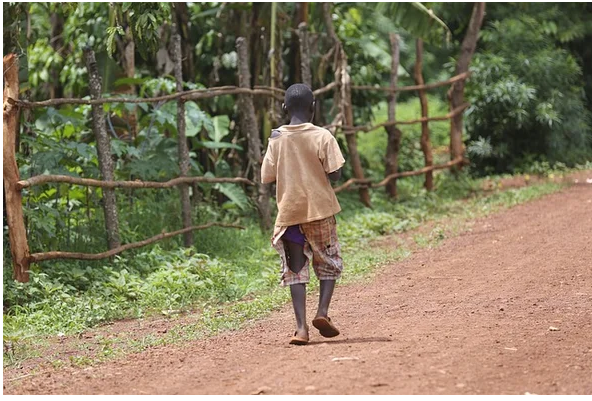
Lending a helping hand in countries with poor health infrastructure is usually well intentioned—but it can cause serious harm.

People who volunteer in underserved countries may be doing more harm than good
Pictured in a Projects Abroad testimonial standing in a white lab coat with his arm around a patient in Tanzania, high school graduate and medical volunteer Mario Martinez describes procedures he did as “experiences I thought I wouldn’t have until after three or four years in medical school.”
Forty-five-year-old retired police officer Margaret Suanez describes in another Projects Abroad testimonial how she performed circumcisions and delivered babies during her volunteer placement in Tanzania.
Neither had licensed medical training, although both hoped for a career in medicine.
As a member of the faculty in global health studies at Northwestern University, I’ve studied medical volunteering in Tanzania since 2011, including over 1,600 hours observing volunteer-patient interactions across six health facilities. I have spoken with more than 200 foreign volunteers in Tanzania, plus conducted formal interviews with 48 foreign volunteers and 90 hosting health professionals.
This research shows that some help does indeed cause harm. In fact, the international volunteer placement industry opens the door to potentially disastrous outcomes.
Empirical data about the medical voluntourism industry is sparse. The most-cited figure estimates up to 10 million volunteers travel abroad annually, spending approximately $4 billion. Volunteers are predominantly young women; the number engaged in international medical volunteering is unknown.
Organizations providing medical voluntourism options may be either for-profit or non-profit.
Popular destinations tend to be both lower-income countries and tourist destinations: Tanzania, Ghana, Cambodia, India, Nepal, the Philippines, Costa Rica, Guatemala, Honduras, and others. Many organizations’ websites prioritize prospective volunteers’ interests rather than the interests of those they purportedly serve.
On the International Volunteer HQ website, for example prospective volunteers learn that placements are available regardless of experience level. Candidates can be nursing or medical students, professionals, even students aspiring to become health professionals. More than 70,000 volunteers 18 or older can click on a country for costs ranging from $325 for one week to $2,015 for 12 weeks.
Projects Abroad offers medical volunteering placements for anyone over age 16, even if they lack prior medical experience and don’t speak the language. It touts itself as a “Doctors without Borders Alternative."
GapMedics has a program geared specifically to high schoolers, which they say will help “set yourself apart from the crowd” of college and university applicants.
A recent report on medical schools surveyed by the Association of American Medical Colleges found 73 percent of medical schools recommend or require that applicants have clinical experiences. Yet 45-50 percent of survey respondents expressed concern about premedical students doing invasive procedures abroad, abroad, including providing vaccines, pulling teeth, suturing and delivering babies.
In Tanzania in 2015, my team encountered a young woman—we’ll call her Mary—who told us she was a medical student. Mary routinely delivered babies unassisted by local midwives because she appeared familiar with the procedure—a skill she said she learned in 2013 on a previous volunteer stint.
Mary violated obstetrics best practices, doing unnecessary episiotomies (cutting the skin between the vaginal opening and anus to make room for the baby’s head) and pulling breech babies (babies positioned bottom instead of head-first in the birth canal). Once routine in obstetrics, current guidelines restrict episiotomy to exceptional cases because they may cause permanent problems for the mother, including incontinence. Meanwhile, pulling breech babies can cause suffocation.
When help harms, it pulls scarce expertise away from patients and puts mothers and babies at risk. Such interference causes sometimes permanent damage and increases patients’ chances of sepsis and death.
Ultimately, patients and local health systems need foreigners’ good intentions to be re-directed towards the people on the ground, already doing the meaningful work in the long term. Putting the safety and needs of local health systems and patients first will ensure help doesn’t harm.
After Mary’s departure, we learned she was not a medical student at all; she was an undergraduate student, unaware of the risks in what she was doing. Hers is the sort help that potentially harms. Mary’s case is the most egregious I’ve observed. Yet most volunteers I’ve observed deliver at least one baby, despite being unlicensed to do so.
The desire to help those in need may confer volunteers with social esteem, yet few volunteers stay long enough to know patient outcomes, or realize their effect on the local health system.
Research has found that volunteering in health settings can be detrimental, even if the volunteers don’t realize it. Volunteers often over-estimate their positive impact.
Licensed doctors can also inadvertently cause harm in these settings. A 2006 study referred to physicians going abroad short-term to repair fistulas (tears between the vaginal wall and bladder or colon, caused by prolonged obstructed labor) as “fistula tourism.” Doctors unfamiliar with this procedure could unintentionally botch the surgery, making later repairs more complex.
Poster un Commentaire